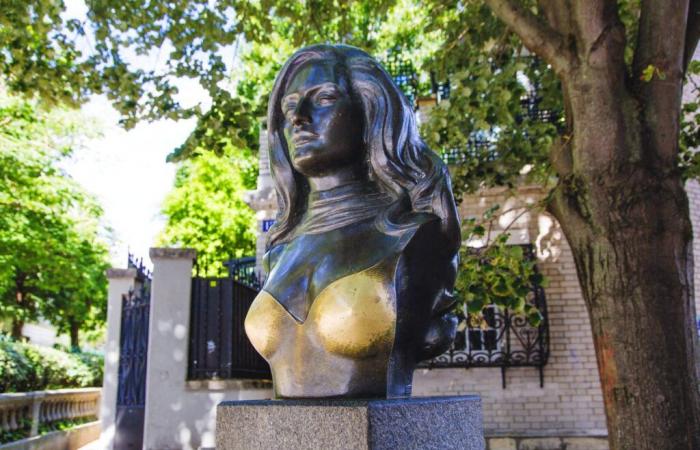
Dalida, a true icon. The singer and actress, who died in Paris on May 3, 1987, has a statue of her in Montmartre. Every year, tourists from all over the world come to see the work sculpted by French artist Aslan.
Inaugurated in 1997, the statue of Dalida is damaged. While one might believe that it is because of the passage of time and nature taking over, this is not the case. The statue is damaged at chest level, the color is no longer the same as the rest. The reason? The thousands of tourists who come to touch her breasts, out of superstition. Touching the chest of this statue would be synonymous with happiness, especially in love. It's difficult to find where this comes from but many people believe it.
“She is really famous. And we must touch it to have prosperity. We want to accomplish our goals in life.” testified two tourists to BFM Paris-Ile de France.
A behavior that raises more and more questions, especially on social networks. An Internet user denounced these practices in a video posted on the social network TikTok and viewed thousands of times.
Dalida: “she would have had the strength to grow old”
On October 31, an Internet user showed the many tourists who came to take photos alongside the Dalida statue. And then they all touch the chest of the Italian singer, naturalized French.
“It's been 25 years and I've been wondering how much longer this can last. And at the very moment when I have this thought, I hear a tourist guide proclaiming 'You have to put both hands, otherwise it doesn't bring good luck, but bad luck'. I tell myself that if Dalida knew that such a spectacle would continue after her suicide, perhaps she would have found the strength to live to be old, very old..” he denounces in voice-over.
For Annie Coste, author of the book Women musicians are dangerous, this bust of Dalida shows her in a posture “offers“. “Her eyes are almost closed, her mouth too, and her breasts are very prominent. Everything contributes, everything encourages you to touch her“, she declared to our colleagues at BFMTV. A behavior which reveals, once again, the excessive sexualization and objectification of women's bodies.





